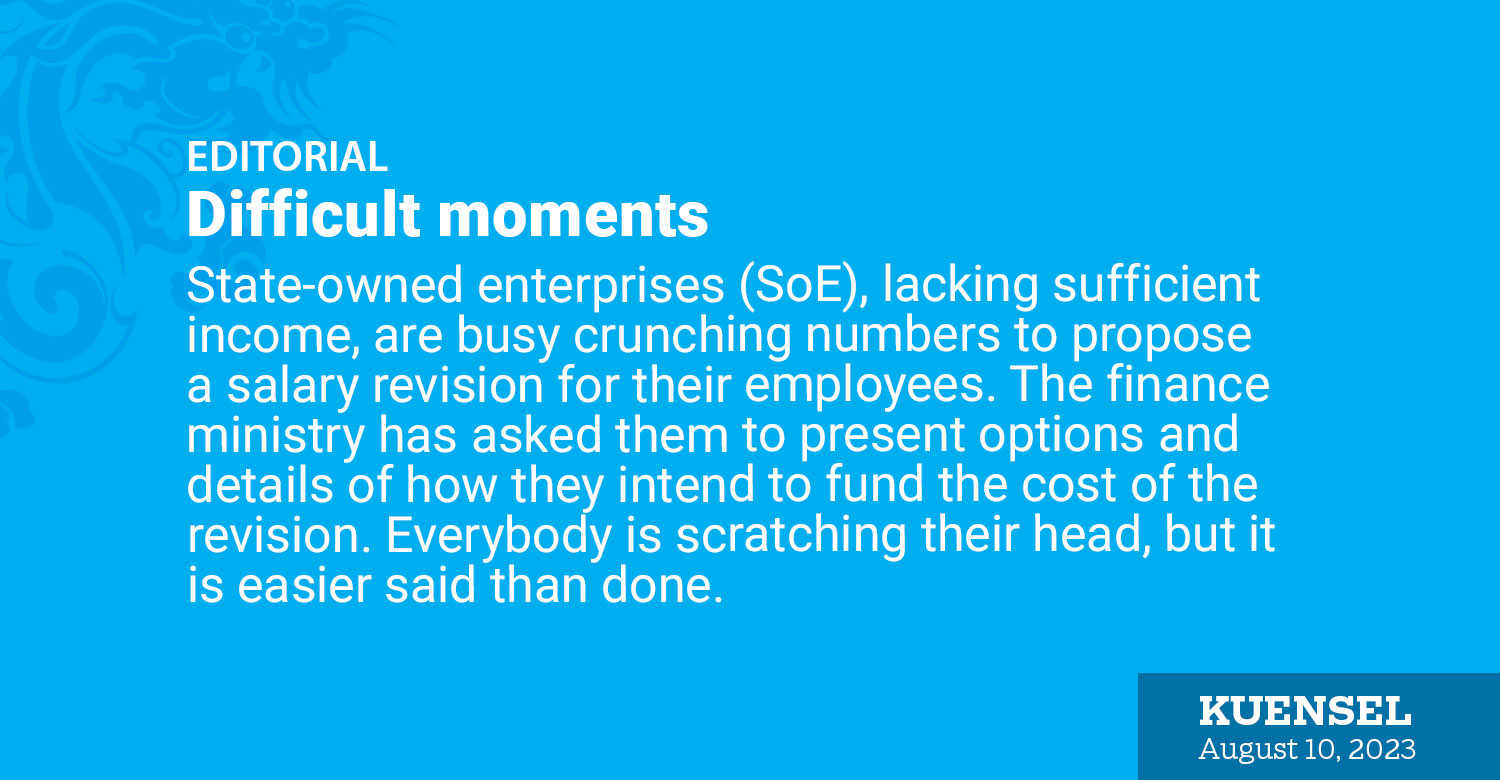State-owned enterprises (SoE), lacking sufficient income, are busy crunching numbers to propose a salary revision for their employees. The finance ministry has asked them to present options and details of how they intend to fund the cost of the revision. Everybody is scratching their head, but it is easier said than done.
All the 13 SoEs are not profitable enough to afford a raise. Given the spiraling cost of living in an economic downturn, an additional income – big or small – is appreciated if not expected. Even if there were one, it will not be as generous as the government-funded raise within the civil service.
The simple yet complex issue is how to fund the additional cost that can range from Nu 1 million to more than 10 million depending on the size of SoEs. How do SoEs fund the revision and ensure that employees are satisfied to keep fulfilling the mandate, some social or not profitable?
Most of the SoEs originated as government departments aiming to adopt a corporate culture and focus on profitability. Not all achieved that. Some inherited both the asset and the burden – senior employees with years of service, but rendered irrelevant because of change in corporate governance.
Following the salary revision in the civil service and the armed forces, and with DHI companies contemplating more substantial revision, the expectation is a raise, even if it is not enough to keep up with the richer companies or civil servants.
Restructuring companies, downsizing, or layoff offers a path to reduce expenses. But this can be construed as punishing some for rewarding others. Despite the call for showing ngar, it is difficult to retrench or “re-engineer” organisations when the hope is a raise in salary. Forcing some to leave to fund a revision for others has become a delicate situation.
Nonetheless, in a corporate world driven by profitability, we often tend to overlook the harsh fact that some of us contribute little to our organisations or gain more than what we contribute. It goes beyond the comprehension of many that an organisation might actually fare better without our presence.
There is also the group of people we often tend to overlook, those who remain in the organisation, working hard, quite often alongside those who do not. While we are conscious of the problems that arise when we retrench people, we must also be conscious of the fact that when we keep unproductive employees, it discourages those who are productive.
Organisations worldwide have had to reduce their staff strength – call it downsizing, retrenchment, golden handshake, or early retirement schemes – for a variety of reasons. It can be painful, but, in today’s changing scenario, it is inevitable.
The assertion that guaranteeing employment for some jeopardises employment for everyone is not without merit.


